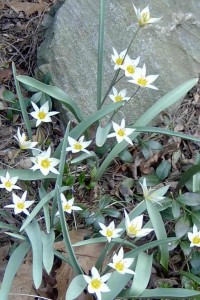Do you have a yard? A garden? A landscape? Whatever you call it, I can show you how to make it more beautiful and less work.
PLEASE NOTE NEW CONTACT INFORMATION!
EMAIL: jmneale@gmail.com
OFFICE PHONE: 781-444-3553
LANDSCAPE DESIGN, CONSULTATION, AND PLANT SHOPPING SERVICES FOR HOMEOWNERS
SPECIALIZING IN LOW MAINTENANCE, SUSTAINABLE, ENVIRONMENTALLY RESPONSIBLE LANDSCAPES
Serving Boston and the Metrowest area, including Brookline, Dedham, Dover, Framingham, Lexington, Medfield, Natick, Needham, Newton, Norwood, Waltham, Wellesley, Weston, Westwood.
“An addiction to gardening is not all bad when you consider all the other choices in life.” Cora Lee Bell
________________________________________________________
GARDENING RESOLUTIONS
No matter what the time of year, it’s always a good idea to make some resolutions. Here are some to consider:
1. Do less work – who wouldn’t want to make this resolution? And it’s one you can actually keep, if you follow at least some of these:
2. Plant more groundcovers. Planting them may involve an initial investment of time and money, but it will save you both later on. You won’t need to purchase and spread mulch in areas that are blanketed by a (preferably) flowering groundcover. Weeds will be crowded out and the soil won’t dry out as quickly. Groundcovers are, in fact, “living mulches” which give you a lot more for your investment than a swath of wood chips.
3. Replace overgrown shrubs with slower-growing, appropriately-sized varieties. You’ll have a low-maintenance garden that will last your lifetime, rather than one that needs to be pruned into submission or periodically torn out and replaced because it’s overgrown its allotted space.
4. Make a compost pile and use the compost. Many of us start a compost pile with lots of good intentions, only to let it lie there and never do anything with it. Follow this link for some information on how to start and maintain a pile with a minimal investment of time and money.
5. Keep fallen leaves on your property. Really! They are “black gold” for your garden. With nothing more sophisticated than a rake and a good lawnmower, you can gather your fallen leaves into piles, mow them to 1/10 their volume, and use them as a nutrient-rich mulch or soil additive. See this link for more information.
6. Have your trees’ health assessed by a certified arborist. Trees are the largest and least replaceable part of our landscapes. Yet we tend to take them for granted. A tree that has been damaged by leaf-eating caterpillars (European winter moth, tent caterpillar, etc.) for several years in a row can decline and eventually die. To avoid this, call an arborist to assess your trees before the forsythia blooms, so preventative spraying can be scheduled at the proper time.
7. Plant something new and native. This is a fun resolution. If you have a typical New England landscape that’s heavy on rhododendrons, azaleas, boxwood and holly, go to a good nursery. Check out some of the wonderful native plants that have been introduced into the trade in the last 10 years or so. There’s been a veritable explosion of plant options going on while you’ve been looking at the same-old, same-old in your garden. Many natives are disease and pest-resistant, drought-tolerant and adaptable to many types of growing conditions.
______________________________________________________
TO RECEIVE MY INFORMATIVE QUARTERLY NEWSLETTER WITH EVEN MORE USEFUL GARDENING TIPS, SEND AN EMAIL WITH “NEWSLETTER” IN THE SUBJECT LINE.



